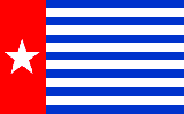A young man took his violin from the box on the floor and performed a new melody in his husky voice. Members of the audience congratulated and embraced the performer, WR Supratman, composer of what is now the national anthem, “Indonesia Raya”; security officers looked confused, and probably they were also moved,” reads a historical record of the last day of the second Youth Congress on Oct. 28, 1928 — which we now commemorate as Youth Pledge Day.
In the following months, Dutch colonial officials tried to decide what
to do with the song, knowing that the flames of the then growing
nationalist sentiment would easily spread if they banned it.
The
song was just one product of the Congress, which became historically
noted for its Youth Pledge. Youth of various organizations from Java,
Maluku, Sumatra and Sulawesi, among others, pledged to become one
nation, one land, with one language — Indonesian.
Despite
repeated warnings that the Congress should not mention anything
political and should not raise the word “independence”, the concept of
“Indonesia” stuck as a main reference of an indeginous identity, other
than as subjects of the Netherlands Indies, and even as most of the
islanders were not speaking “Indonesian”.
In an independent
Indonesia, when stability settled in, confusing questions of that
indeginous identity became taken for granted, once Indonesia encompassed
the sprawling archipelago from Aceh to Papua.
Then, with the end
of the authoritarian New Order, things were not so settled. Years of
abuse and cruelty in resource-rich lands with poor people led to
stunning results — stunning to those who believed the big lie that we
were all a happy family. The Timorese finally gained independence as
they had long wished, and the Acehnese and the Papuans also said they
wanted out.
Until today, 84 years after that congress on Jl. Kramat, Central Jakarta, things are still not so settled.
Foreign
observers may not be quite surprised — there was little to unite the
archipelago in the first place, apart from the former maps of the East
Indies or the kingdoms of old. Regional autonomy was the genius way out
of
the euphoric atmosphere that freedom brought, the
freedom to
differ from the capital, which once harshly dictated uniformity. Hence,
for better or for worse, every year we have new regencies or provinces —
the latest being North Kalimantan, the province officially created late
Monday.
Others want a national overhaul — militant jihadis have
bombed their way, they believed, to heaven, to try and replace an
“infidel” state, earning derision from fellow Indonesians.
So
what glues us together as a nation? One clue lies in the process leading
to the Youth Congress itself, the deliberations of young men and women.
The Javanese were initially adamant that Javanese should be the
national language, for instance, as they saw that they constituted the
majority. But the need to communicate across the islands, besides the
search for a similar, new identity as free subjects from colonial rule,
led to the agreement and the legacy of Bahasa Indonesia.
Mutual
needs, and mutual respect for differences, were also legacies of that
Congress. The nation today could gain much from reviewing the historic
lessons of the young people of that earlier and, it seems, wiser
generation.
